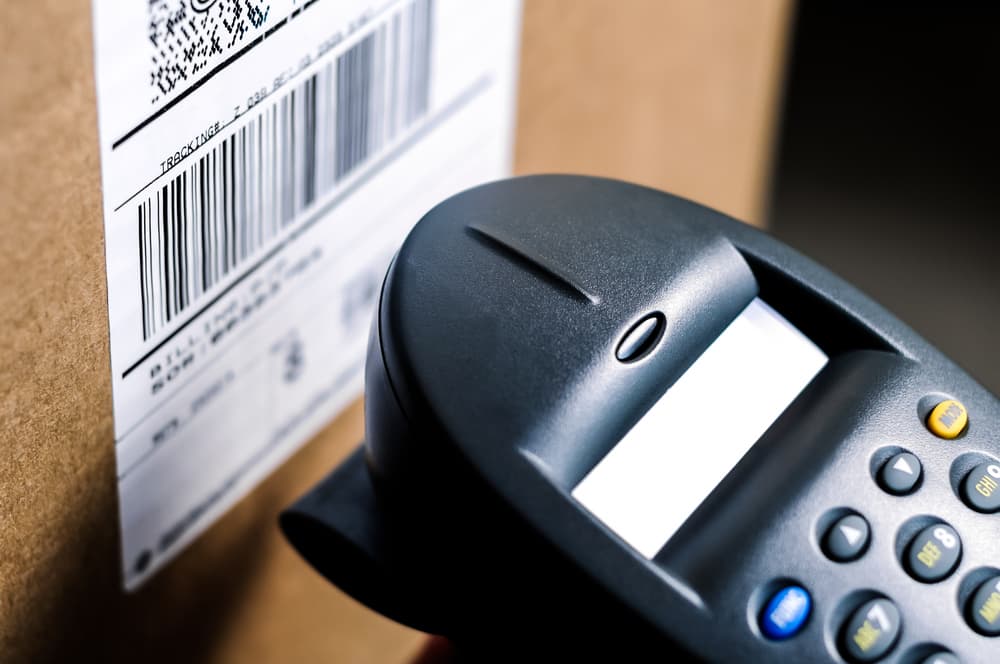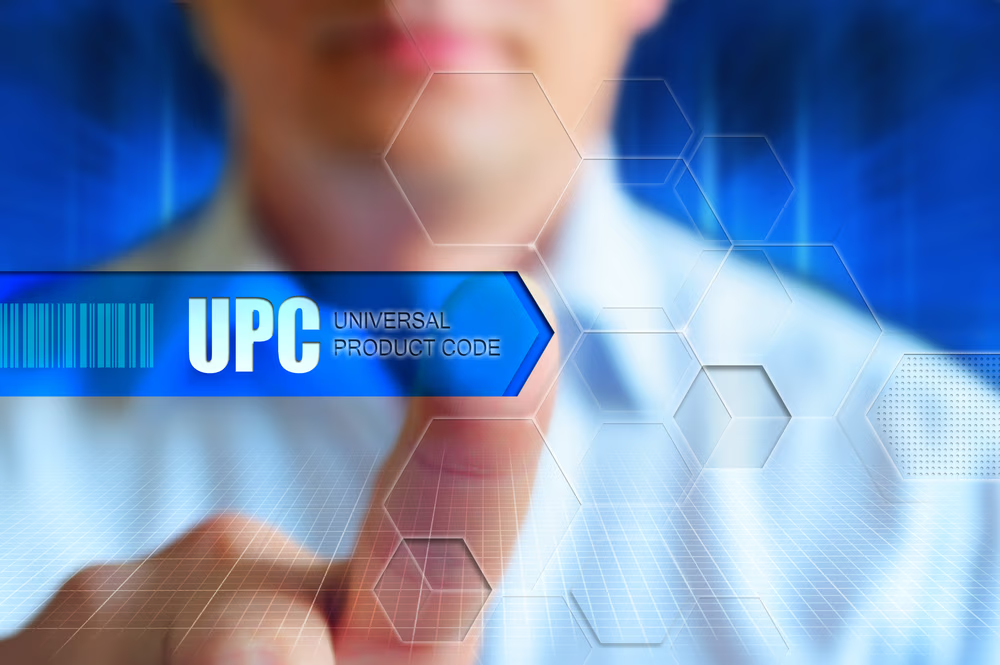Discover what a universal product code is and its advantages with this guide to UPC codes from the supply chain experts at Orderful.
Understanding How UPCs Identify Products in Global Commerce
If you’ve ever scanned a barcode at checkout, you’ve interacted with a Universal Product Code (UPC). It’s the small black and white barcode printed on almost every retail product, helping businesses track, price, and sell items accurately around the world.
This guide explains what a UPC is, what it stands for, and why it’s essential for retailers, manufacturers, and supply chain partners.
What Is a UPC?
A Universal Product Code (UPC) is a unique numerical identifier used to differentiate products in retail, logistics, and eCommerce. It appears as a barcode that can be scanned electronically in stores or warehouses.
Each UPC includes a 12-digit number tied to a product’s details, such as the manufacturer, item type, and size. Two variations of the same item—like a 12-oz and 24-oz bottle—each have their own UPC so systems can correctly record inventory, pricing, and orders.
If you’re new to barcodes, see https://www.orderful.com/blog/barcode-basics-types-uses-retail for a full breakdown of barcode formats and how they work in retail systems.
%20universal%20product%20code1.jpg&w=1920&q=75)
What Does UPC Stand For?
UPC stands for Universal Product Code. It was created in the 1970s by GS1, the global standards organization responsible for universal identifiers like GTINs, EANs, and barcodes.
The “universal” aspect means UPCs are recognized globally, providing a shared system for identifying products across every trading partner and retail channel.
For more context on how UPCs fit within global identifiers, read https://www.orderful.com/blog/what-is-a-gtin.
Structure of a UPC Code
A standard UPC contains both the UPC-A barcode (the scannable pattern) and the 12-digit number printed below it.
Segment | Digits | Meaning |
|---|---|---|
Company Prefix | 6–10 | Identifies the brand or manufacturer (assigned by GS1) |
Item Reference | 1–5 | Identifies the individual product within that brand |
Check Digit | 1 | Used to verify that the barcode scans correctly |
The check digit confirms the code’s accuracy when scanned, reducing data errors and ensuring reliability throughout the supply chain.
How UPC Codes Work
When a UPC barcode is scanned, the point-of-sale or warehouse system retrieves the product record associated with that number. This record contains information such as product name, description, and price.
UPCs allow systems to automatically manage inventory, reorders, and sales analytics. Online marketplaces like Amazon, Walmart, and Target rely on UPCs to catalog items correctly and prevent duplicate listings.
If you’re planning to sell online, check out our blog for tips on how UPCs affect product listings and visibility on major platforms.
Why Universal Product Codes Matter
UPCs serve as a bridge between the physical and digital retail worlds. They connect manufacturing, logistics, sales, and analytics into one traceable data stream.
Key Benefits of Using UPCs
- Accurate inventory management across warehouses and retail locations
- Faster checkout and fewer pricing errors
- Simplified product onboarding for retailers and marketplaces
- International compatibility through GS1 standards
- Improved accuracy in EDI transactions and supply chain automation
To see how identifiers like UPCs support data flow in modern integrations, explore https://www.orderful.com/blog/what-is-edi.
UPC vs. EAN vs. GTIN
UPCs belong to a global family of identifiers used for product tracking. The most common alternatives are EANs (European Article Numbers) and GTINs (Global Trade Item Numbers).
Code Type | Digits | Region | Description |
|---|---|---|---|
UPC | 12 | U.S. and Canada | The standard barcode format used in North America |
EAN | 13 | Global | The international version used in other markets |
GTIN | 8, 12, 13, or 14 | Global | The broader identifier system that includes both UPC and EAN |
To understand how GTINs are structured and how they relate to UPCs, visit https://www.orderful.com/blog/what-is-a-gtin.
How to Get a UPC Code
To generate valid UPCs, businesses register with GS1, which assigns company prefixes.
- Apply for a company prefix at
- Assign a product number to each unique item.
- Use GS1-approved tools to generate barcodes.
- Print the barcode on your packaging where it can be scanned easily.
- Test the barcode before distribution to ensure accuracy.
Avoid third-party UPCs not issued by GS1; they may be duplicates or invalid. For guidance on proper product labeling, see https://www.orderful.com/product/shipping-labels.

Real-World Examples of UPC Use
Walmart uses UPCs to manage labeling, restocking, and product analytics.
Amazon requires valid UPCs or GTINs to list products.
Target connects UPC data between its online and in-store systems.
UPCs also help automate processes in logistics and fulfillment, preventing costly mistakes like duplicate shipments or backorders.
UPCs and EDI Transactions
In electronic data interchange (EDI), UPCs act as the product identifiers across purchase orders, invoices, and shipment notifications. When a retailer sends a Purchase Order (EDI 850), UPCs ensure every item aligns with its agreed price and quantity.
You can explore related concepts in https://www.orderful.com/blog/bill-of-exchange-definition or learn how EDI powers modern supply chains in https://www.orderful.com/blog/what-is-edi.
Key Takeaways
A Universal Product Code (UPC) is a 12-digit identifier printed as a barcode to track retail products.
UPC stands for Universal Product Code, created by GS1.
UPCs streamline checkout, inventory management, and EDI communications.
They belong to the GTIN system used globally for product identification.
For additional context, visit https://www.orderful.com/blog/sku-vs-upc-understanding-the-differences-in-product-identification.
If you are looking for a faster way to manage EDI across every trading partner, Orderful provides a modern API first platform designed for scale. You can learn more about how the platform works and review our pricing to see how simple, transparent plans fit your integration strategy.
FAQ: Universal Product Code (UPC)
What Does UPC Stand For?
UPC stands for Universal Product Code, a standardized barcode used to identify retail products across systems.
What Is the Meaning of UPC?
The meaning of UPC refers to its role as a unique identifier that connects every product to its data, improving accuracy in inventory, pricing, and logistics.
How Many Digits Are in a UPC Code?
A standard UPC-A barcode has 12 digits, composed of a company prefix, an item reference, and a check digit.
What Is the Difference Between UPC and EAN?
A UPC has 12 digits and is used mainly in North America, while an EAN has 13 digits and is used globally. Both are governed by GS1 standards.
What Does a UPC Code Look Like?
A UPC appears as vertical black bars printed above or below a 12-digit number that scanners can read electronically.

